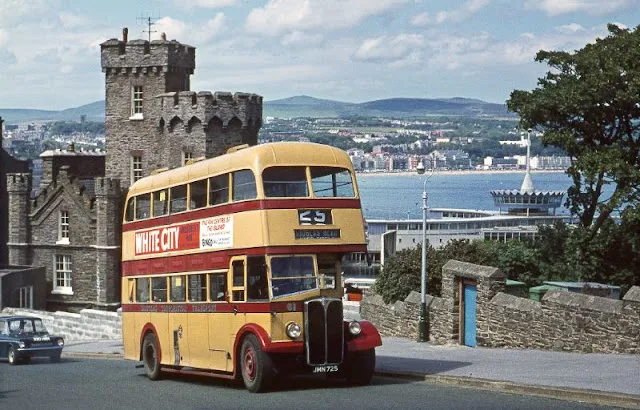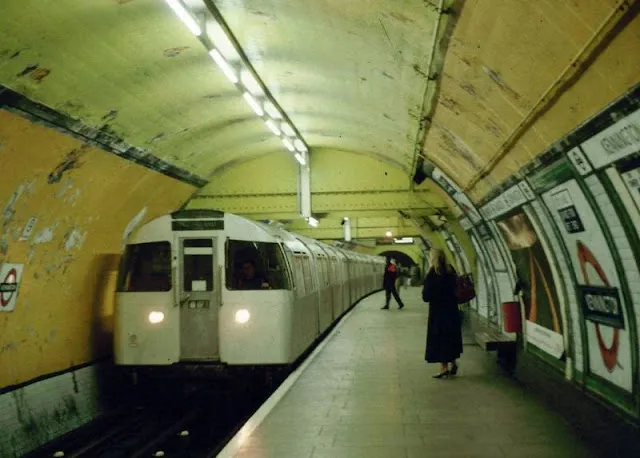The 19th century was an age of science and industry, and one where individual inventors could transform the world. These enterprising pioneers are still ritually recalled alongside their inventions: Marconi and radio, Bell and the telephone, Benz and the motorcar. Although far less famous, Brighton’s Magnus Volk also personifies this spirit of technological endeavor.
Volk is chiefly remembered for the railway that bears his name on Brighton seafront: Britain’s first public electric railway that still operates during the summer. Yet Volk’s most extraordinary creation was the Brighton and Rottingdean Seashore Electric Railway. Its car was appropriately named ‘Pioneer’, but it became more commonly known as the ‘Daddy Long-legs’ or the ‘Spider’.
The railway, which cost £30,000 to build – the equivalent of £2.4million in today’s money – opened on November 28, 1896 at Paston Place in Brighton. It was initially a great success, with large crowds queueing up to take a ride through the sea. But disaster struck just six days later when a severe gale wrecked the car and the pier, shutting down the service for eight months.
It was re-opened on July 20, 1897, with the Prince of Wales among those who took a ride on it. But customers became fewer and farther between as the 6d (sixpence) fee for a train that only went six miles per hour grew too much for locals. High tide would often slow the car down and breakdowns were common, causing timetable cancellations for weeks on end.
During the summer of 1900, the service had to be suspended when the track was damaged by the scour from the construction of two concrete groynes to prevent erosion of the cliffs. Then on September 1, 1900, Brighton Corporation gave Volk two months notice to relocate the track to make room for groyne extensions. Volk’s suggestions were rejected and in February 1901 the Borough Surveyor removed a section of the track and the service was suspended. It was officially abandoned the following year.
The elegant car was tied up at the Ovingdean landing stage, where it was left to die a slow death until it was removed for scrap in early 1910. Nothing remains of it now, other than some concrete blocks that supported the rails. But it has left a bewitching visual legacy in the form of numerous photographs and postcards. The railway was such an unviable idea that it was never emulated; there has been nothing else like it in the world. Its impracticality made it unique, and if it were not for the visual evidence, it would almost be hard to believe that it ever really existed.
![]()
![]()
![]()
![]()
![]()
![]()
![]()
![]()
![]()
![]()
![]()
![]()
![]()
![]()
![]()
![]()
![]()
![]()
![]()
![]()
Volk is chiefly remembered for the railway that bears his name on Brighton seafront: Britain’s first public electric railway that still operates during the summer. Yet Volk’s most extraordinary creation was the Brighton and Rottingdean Seashore Electric Railway. Its car was appropriately named ‘Pioneer’, but it became more commonly known as the ‘Daddy Long-legs’ or the ‘Spider’.
The railway, which cost £30,000 to build – the equivalent of £2.4million in today’s money – opened on November 28, 1896 at Paston Place in Brighton. It was initially a great success, with large crowds queueing up to take a ride through the sea. But disaster struck just six days later when a severe gale wrecked the car and the pier, shutting down the service for eight months.
It was re-opened on July 20, 1897, with the Prince of Wales among those who took a ride on it. But customers became fewer and farther between as the 6d (sixpence) fee for a train that only went six miles per hour grew too much for locals. High tide would often slow the car down and breakdowns were common, causing timetable cancellations for weeks on end.
During the summer of 1900, the service had to be suspended when the track was damaged by the scour from the construction of two concrete groynes to prevent erosion of the cliffs. Then on September 1, 1900, Brighton Corporation gave Volk two months notice to relocate the track to make room for groyne extensions. Volk’s suggestions were rejected and in February 1901 the Borough Surveyor removed a section of the track and the service was suspended. It was officially abandoned the following year.
The elegant car was tied up at the Ovingdean landing stage, where it was left to die a slow death until it was removed for scrap in early 1910. Nothing remains of it now, other than some concrete blocks that supported the rails. But it has left a bewitching visual legacy in the form of numerous photographs and postcards. The railway was such an unviable idea that it was never emulated; there has been nothing else like it in the world. Its impracticality made it unique, and if it were not for the visual evidence, it would almost be hard to believe that it ever really existed.























